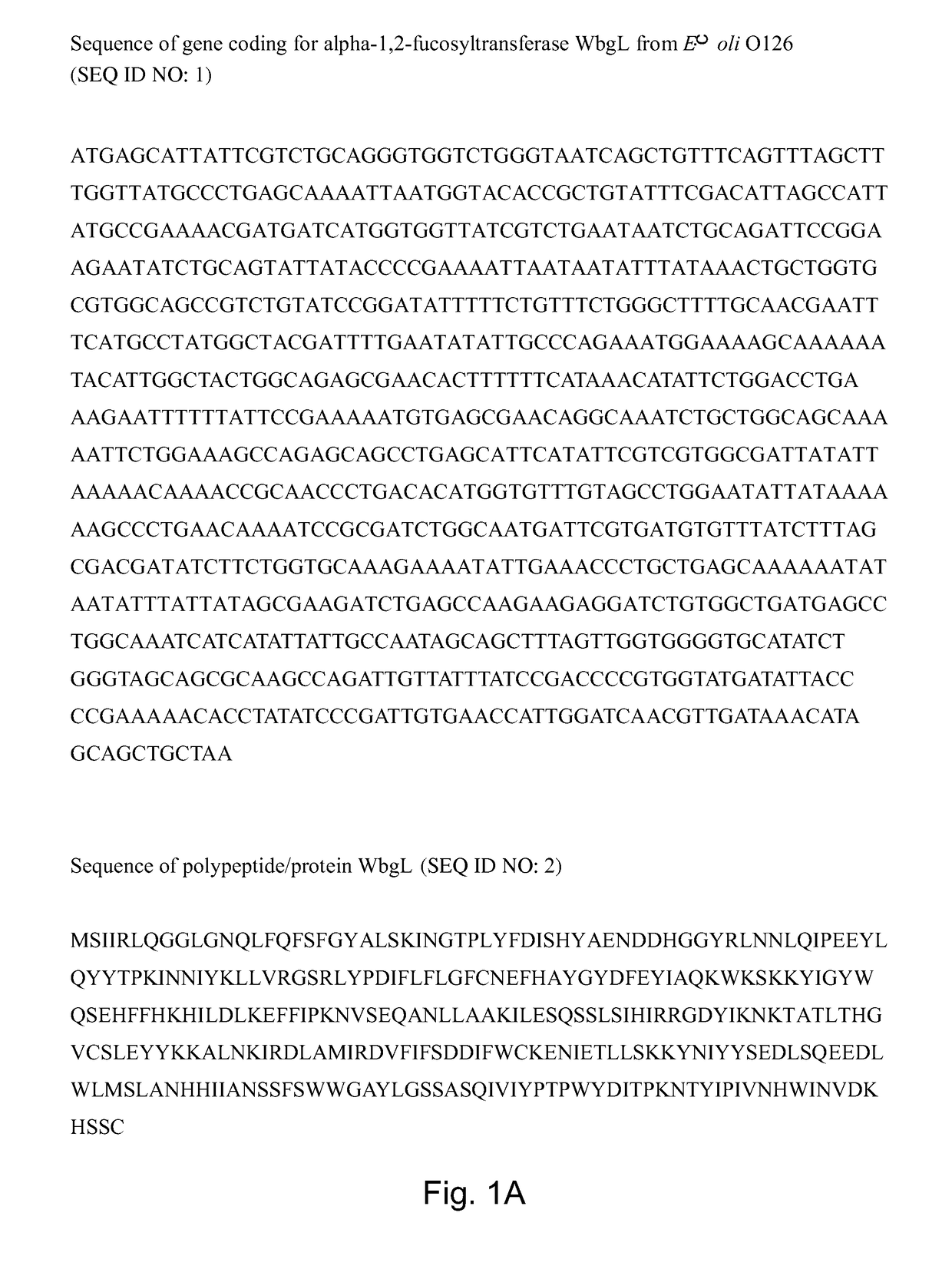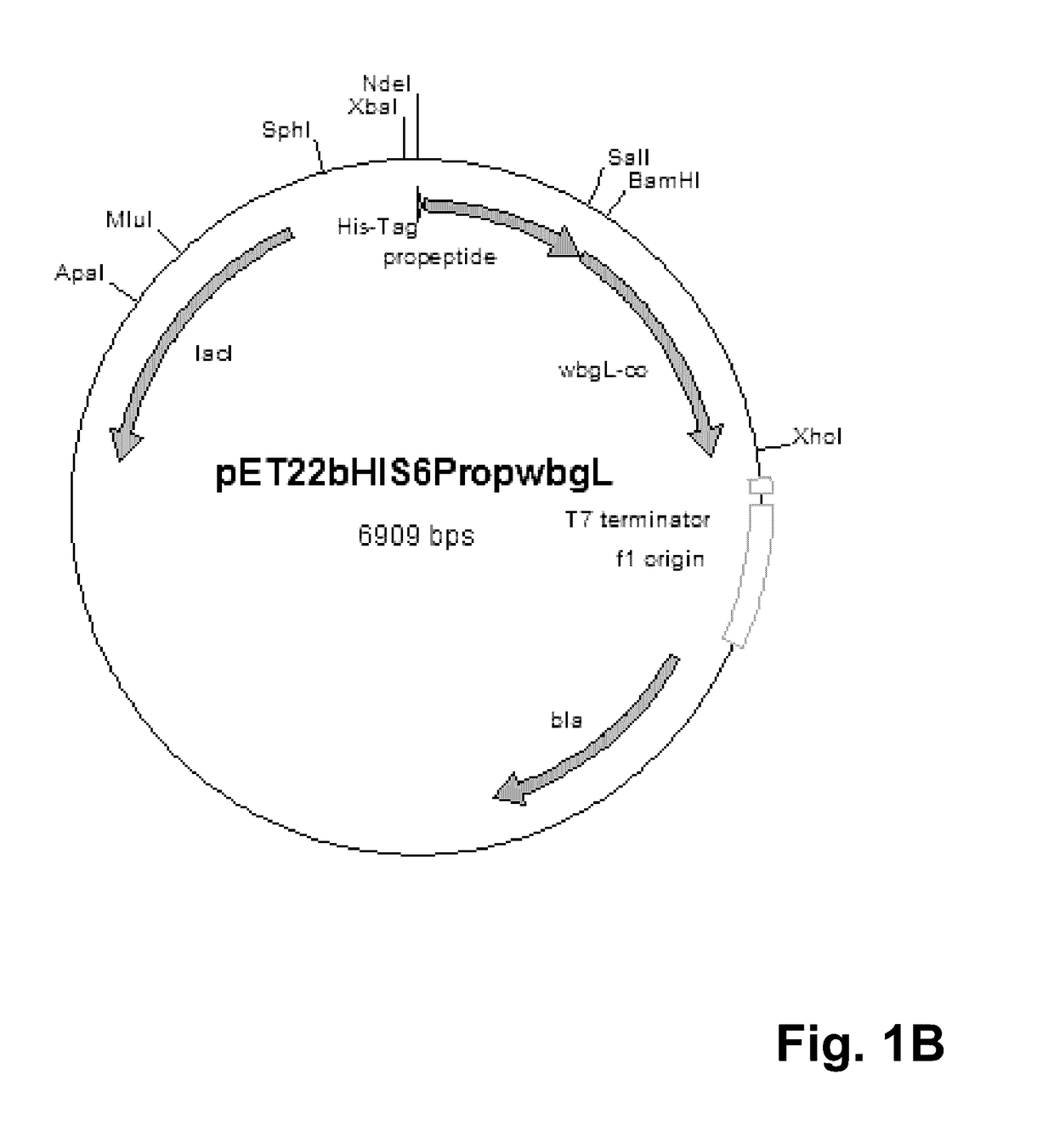Fucosyltransferases and their applications
a technology of fucosyltransferase and adsorption, applied in the field of new fucosyltransferase, can solve the problems of inability to synthesize glycans and even glycoconjugates using a general commercial system, and difficulty in formation of specific linkages, so as to achieve the effect of high amount of desired substrate and time- and cost saving
- Summary
- Abstract
- Description
- Claims
- Application Information
AI Technical Summary
Benefits of technology
Problems solved by technology
Method used
Image
Examples
example
[0091]For cytoplasmatic expression of the putative alpha-1,2-fucosyltransferase WbgL the expression vector pET22b(+) (Novagen, Darmstadt, Germany) was modified. Therefore, the pelB leader sequence leading to periplasmatic expression in E. coli was cut off using the restriction enzymes NdeI and BamHI. The propeptide gene sequence (SEQ ID No. 3) of the lipase of S. hyicus (Sauerzapfe, B., D. J. Namdjou, et al. (2008): “Characterization of recombinant fusion constructs of human beta-1,4-galactosyltransferase 1 and the lipase pre-propeptide from Staphylococcus hyicus.” Journal of Molecular Catalysis B: Enzymatic 50(2-4): 128-140) was amplified from the plasmid pLGalTΔ38 using the primers 5′-CATATGCACCACCACCACCACCACAATGATTCGACAACACAAACAACGAC-3′ (SEQ ID No. 5) and 3′-GGATCCGTATGGTTTTTTGTCGCTCGCTTG-5′ (SEQ ID No. 6), and fused to the modified pET22b vector resulting in vector pET22bHIS6Prop. The resulting vector was digested by BamHI and XhoI. The gene coding for putativ...
PUM
| Property | Measurement | Unit |
|---|---|---|
| pH | aaaaa | aaaaa |
| pH | aaaaa | aaaaa |
| volume | aaaaa | aaaaa |
Abstract
Description
Claims
Application Information
 Login to View More
Login to View More - R&D
- Intellectual Property
- Life Sciences
- Materials
- Tech Scout
- Unparalleled Data Quality
- Higher Quality Content
- 60% Fewer Hallucinations
Browse by: Latest US Patents, China's latest patents, Technical Efficacy Thesaurus, Application Domain, Technology Topic, Popular Technical Reports.
© 2025 PatSnap. All rights reserved.Legal|Privacy policy|Modern Slavery Act Transparency Statement|Sitemap|About US| Contact US: help@patsnap.com



